Follow these Cheap Indoor Plant Parenting Hacks to keep your green friends happy and alive for a long at little or no cost!
Maintaining houseplants can be a tough and expensive task if you don’t know how to do it correctly. To make it easy for you, we bring some of the best Cheap Indoor Plant Parenting Hacks!
Cheap Indoor Plant Parenting Hacks
1. Baking soda as Houseplant Cleaner
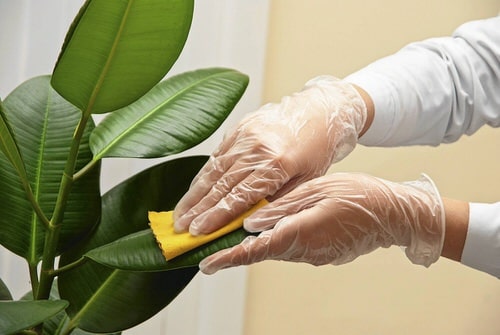
To encourage photosynthesis–the foliage must remain clean and dust-free. For doing this, take a soft, lint-free, moist cloth soaked in water and sodium bicarbonate solution (a pinch of baking soda in one liter of water) and gently clean the leaves. Check out some more baking soda uses here!
2. Vinegar to Clean Clay pots
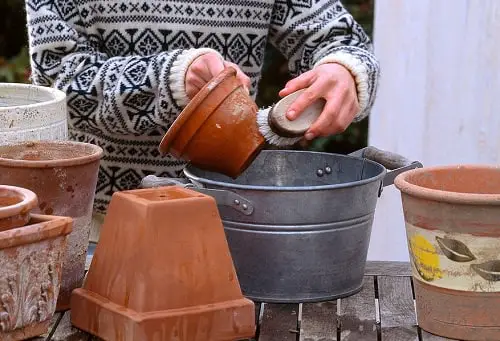
Vinegar has several uses in the kitchen, and you can also use this cheap miracle ingredient to clean your clay pots! As the pots absorb calcium, salts, minerals from water and fertilizers, they end up looking ugly over time.
Make a solution of 1 cup of 5% acidic white vinegar in 3-4 cups of water and soak the pots in this solution for 20-30 minutes. Gently scrub with a soft-bristled brush, and you are done!
Check out amazing vinegar uses in the garden here
3. Cornstarch Reduces Watering Needs
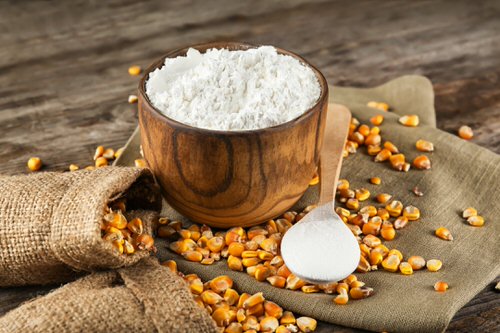
Cornstarch is generally used in every kitchen as a thickening agent in soups, gravy, and other dishes. You can use this ingredient for plants by adding 2 tablespoons to a medium-sized pot.
It will help restore moisture and reduce the frequent watering requirements.
Learn more cornstarch uses in the garden here
4. Use Old Sponges for Layering
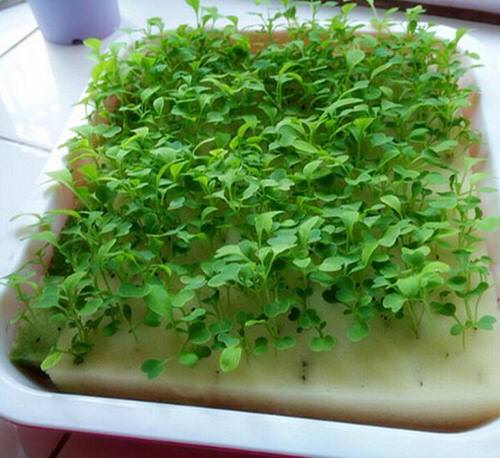
You can use old sponges for layering the bottom of the pots. They will prevent root rot by soaking extra water that runs down the bottom.
5. Use Chopstick to Support Plants
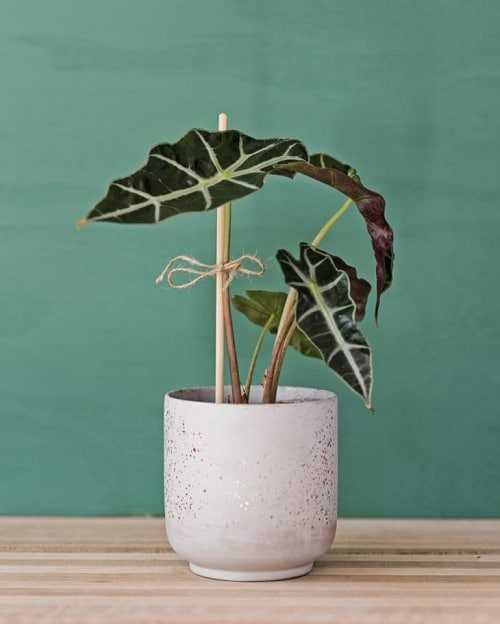
Used wooden chopsticks can be used to support small plants. Insert them in the soil and string up the droopy stems on them using plant tape or intertwine.
6. Seedlings in Eggshell Halves and Empty Cardboard Egg Carton

Don’t buy small pots for growing seedlings. Crack the eggshells carefully to sow seeds in them. Have a look at more eggshell ideas here.
You can also use cardboard cartons, which are used to store eggs, for starting seeds.
7. Eggshell Tea
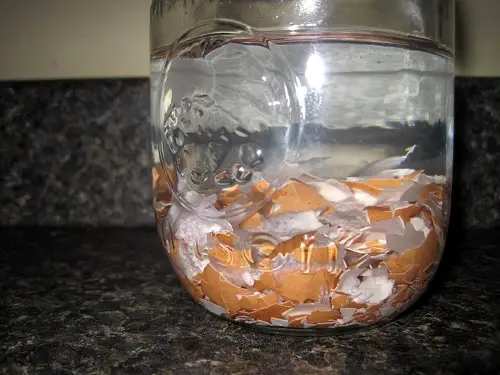
According to the document published on the Florida University extension website, the eggshell contains 3% phosphorus, 0.3% magnesium, with traces of sodium, potassium, zinc, manganese, iron, and copper that plant needs. Make its tea by boiling eggshells in a gallon of water and apply it to plants when it cools down.
Check out our article on proven eggshell tea therapy for plants here
8. Eggshells as Fertilizer

Eggshells are an excellent source of calcium carbonate (37%), an essential element needed for plant development by nitrogen (N) fixation, and also provide potassium and phosphorus. Read and learn Cheap Indoor Plant Parenting Hacks with eggshells here.
9. Beer in the Compost

Beer has many nutrients like phosphorus, calcium, bacteria yeast, magnesium, and potassium that can boost the fertility of compost and return those nutrients to the soil.
Use it as a supplement to increase the rate of decomposition, which in turn boosts the breaking down of a particular component in a compost pile.
10. Coffee Grounds and Paper Coffee Filters
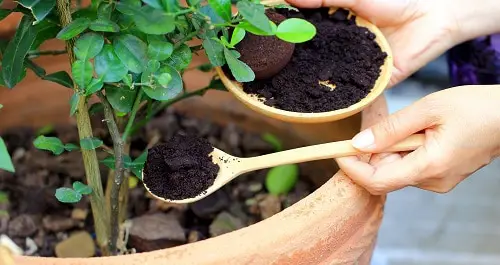
Coffee grounds are rich in nitrogen and also contain potassium, magnesium, and calcium, all of which are great for the plant’s growth. Just sprinkle the grounds on the soil, and you’re done! You can use it on plants like pothos, philodendrons, roses, and jade plants.
Have a look at the houseplants that love coffee here
11. Water Bottle Hack
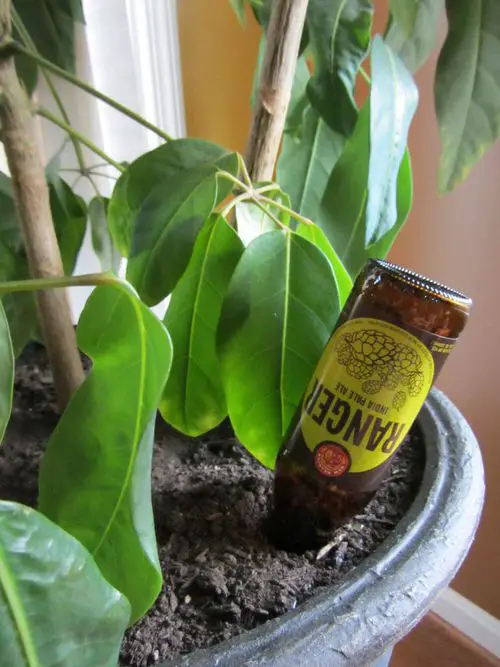
If you are a constant traveler, then you can use this hack to make sure your plants are watered when you are away.
Fill a bottle with water and insert it in the soil, upside down, after making tiny holes on the cap. The water will seep through it, keeping the plant watered when you are away!
12. Charcoal
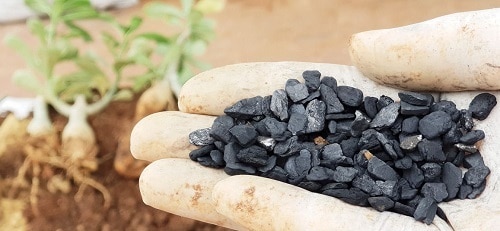
Thanks to its high potassium content, charcoal acts as a soil conditioner. It is a great soil additive and can be used as mulch too. Using activated charcoal with water also helps in detoxifying the soil by clearing the buildup. You can also use it to neutralize the harmful effect of pesticides, thanks to its absorption qualities.
Check out our article on some amazing charcoal uses in the garden here
13. Aquarium Water

As aquarium water contains ammonia, nitrogen, phosphorus, and potassium, you can use it to water the plants for added benefits. It also contains beneficial micro-organisms that help in nurturing the soil. You can use it for lucky bamboo, pothos, and tomatoes. It is also good for cuttings that grow in water and plants in vases.
Here’s everything you need to know about using Aquarium Water for plants
14. Boiled Vegetable, Pasta, or Rice Water
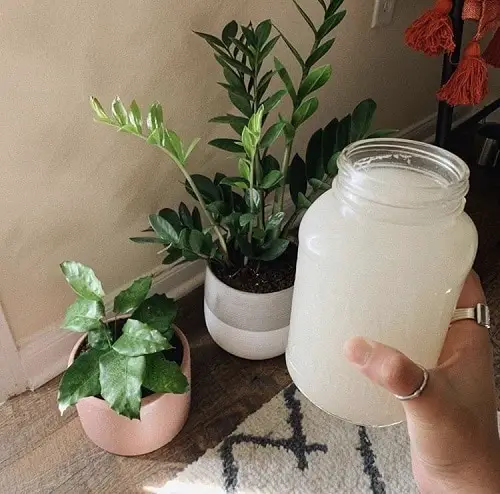
The water from veggies, pasta, and rice has traces of calcium, starch, carbohydrates, phosphorus, iron, zinc, and potassium that boost the plant’s growth by providing beneficial nutrients.
Check out the benefits of using pasta water in plants here
15. Use Banana Peels as Fertilizer
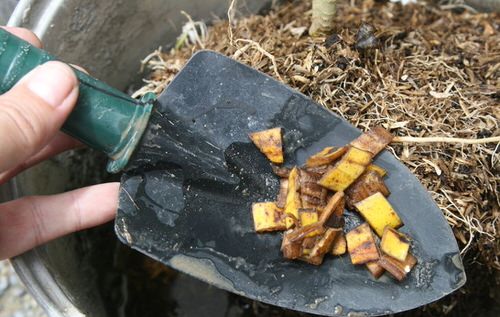
Banana peels are a great source of potassium and phosphorus that can do wonders for peppers and tomatoes. Chop the peels and place them in the oven or in the sunlight under a strainer to make banana peel chips.
Spread the bits in the center of the plants and water. You can also bury them under the soil of potted plants or use them as mulch.



Cool ideas. Will try them on my balcony garden. I compost egg shells along with my kitchen waste but they take a long time to compost.
I pulse the egg shell in mixie after washing and drying. Add a spoonful to each plant every week.
All these ideas are awsome to know about, I have used some of them already , but the Banana peel one is super interesting as I eat a lot of bananas! Thanks again to taking the time to post for everyone!
boil the banana peels, let the water cool and give that to your houseplants